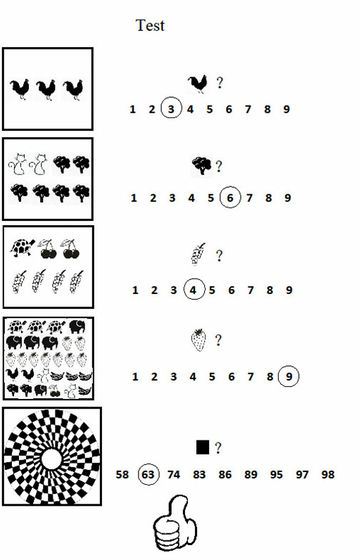Research results that'invisible wall drawn in heart' prevents cheating during the test

If you run into a question you don't understand when you're solving a test question, and then peek at the answer of someone sitting next to you, you'll end up with 'cheat.' In order to prevent this, some test venues may be equipped with a tether between the seats. However, in a study targeting children, it was found through experimentation that even if there is no physical barrier, it will be easier for a person to commit cheating by being clearly aware of the boundary with others.
Invisible Barriers Cut Down on Cheating
The University of California, San Diego, University of Toronto, and Hangzhou Normal University conducted four experiments with 350 Chinese children aged 5 to 6 years. The children were asked to solve a test with a puzzle-like problem of choosing answers by numbers. Another desk was placed a little further away from the desks where the children were taking the test, and on top of that desk the answers to the tests the children were taking were placed.
The questions in the provided tests were basically easy, but only the last one was set to a very high degree of difficulty. Therefore, when the children were asked to solve the test, it was said that about 50% of the children cheated by looking into the answer placed next to it.

Next, the research team also tested with a metal frame and transparent plastic as shown in the following picture. Of course, it is impossible to physically prevent cheating because the other side of the metal frame and transparent plastic can be seen through. However, by placing a metal frame and transparent plastic, the incidence of fraud fell to 20% to 30%.

Furthermore, instead of putting a metal frame or transparent plastic, an adult acting as a teacher declared to the child that he would shake the magic stick of the toy before the test, 'I will install a magic wall here', actually, Found that the incidence of fraud fell despite the absence of any physical barriers.

According to one of the research team, Professor Gale Hayman of the Department of Psychology at the University of California, San Diego, this study is based on the idea called the ' moral barrier hypothesis .' For example, the ropes that divide the procession at an airport are not physically distinct spaces, unlike walls, but people line up to form a line without protruding from this rope. In other words, the moral barrier hypothesis is that people are conscious of spatial boundaries and do not engage in morally unfriendly acts.
Professor Hayman says the experiments have shown that even young children have the ability to pick up clues in the surrounding environment and take moral actions. ``Parents and teachers can apply environmental design to moral education,'' said Professor Kang Lee of the University of Toronto's Department of Psychology. Fraud may also be reduced.'
Related Posts:
in Science, Posted by log1i_yk







